“Poster stamps?” A short pause, a puzzled look. “And… what are poster stamps?” This was more or less the reaction of every one of my friends and acquaintances when I told them these last months about ‘what I’m working on at the museum right now’. Namely, an exhibition on poster stamps.
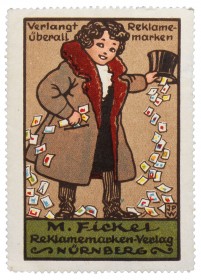
Poster stamp from the publisher M. Fickel © Jewish Museum Berlin, photo: Jens Ziehe, gift of Peter-Hannes Lehmann
Poster stamps, I would answer, are small promotional pictures, a little bigger than stamps. They were used as advertisements for products and stores just about exactly a hundred years ago. Some of the stamps were designed by well-known artists like Lucian Bernhard and people would collect them, particularly children.
I didn’t know much more than that about these poster stamps before I started researching for our cabinet exhibition “Pictures Galore and Collecting Mania – Advertising in Miniature”. The show begins on 4. December, 2014 and lasts until 31. May, 2015 at the Rafael Roth Learning Center. To learn more about the relevance that the stamps had before World War I, I began reading contemporary advertising manuals and magazines.
At first I found relatively little on the subject, → continue reading
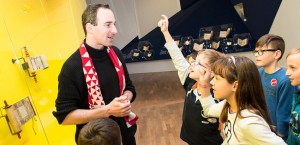
Schoolchildren on a guided tour of the exhibition “The Creation of the World”
© Jewish Museum Berlin, photo: Nadja Rentzsch
“I know!” shouts Tamo* (aged 10): “It’s Jewish writing!” “It’s called Hebrew—Hebrew writing” Mia (aged 10) corrects him. She knows the term because her best friend comes from Israel. She has seen letters like this before, at her friend’s house. Alexander (aged 34) chuckles. He works at the Jewish Museum and is giving a group of primary schoolchildren from Berlin a tour of “The Creation of the World,” our current temporary exhibition. On display are historical manuscripts and artful illustrations. → continue reading
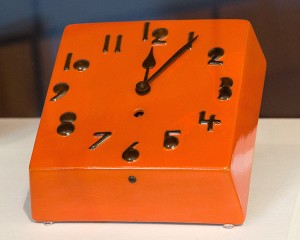
Clock, designed by Greta Heimann-Loebenstein.
Gift from the heirs of Greta Heimann-Loebenstein.
© Jewish Museum Berlin, photo: Nadja Rentzsch
“I chose this clock,” says Leonie* (8 years old) pointing to the showcase. The clock is red and the numbers look a bit strange. She laughs. “A clay clock!” She’s never seen anything like it. The children study the cups, pots, and vases in the big cabinet intently. They gaze, curiously, at the shapes, colors, and designs. They’re supposed to pick the object they like best. Then they’ll learn the name of the ceramicist who made it, its purpose and appearance.
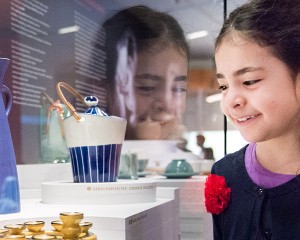
Children’s tour through the cabinet exhibition “Tonalities. Jewish Women Ceramicists from Germany after 1933”
© Jewish Museum Berlin, photo: Nadja Rentzsch
Jona (7) exclaims: “I like this bowl best. Grete made it.” “I think that design is lovely. What would you put in the bowl?” Anna (43) asks him.
Anna is guiding the children from a Berlin elementary school through the cabinet exhibition “Tonalities. Jewish Women Ceramicists from Germany after 1933.” Without hesitating, Jona answers: “Apples or bananas, or even nuts.” “Maybe even pears, or bread!” calls out Elsa (8).
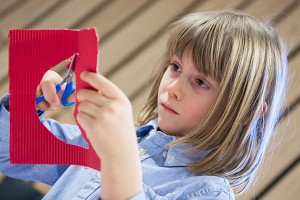
Workshop at the studio in the Academy of the Jewish Museum Berlin
© Jewish Museum Berlin, photo: Nadja Rentzsch
Her favorite object is a candlestick. It’s beige and was made by the ceramicist Hanna. Anna asks the class, “Do you all know what celebration this candlestick would be used for?” Leonie’s hand flies up; she knows the answer: Hanukkah. She has just participated in a candle-dipping workshop for the Jewish Festival of Lights in December.
After the tour, the children start working on their own projects. → continue reading




